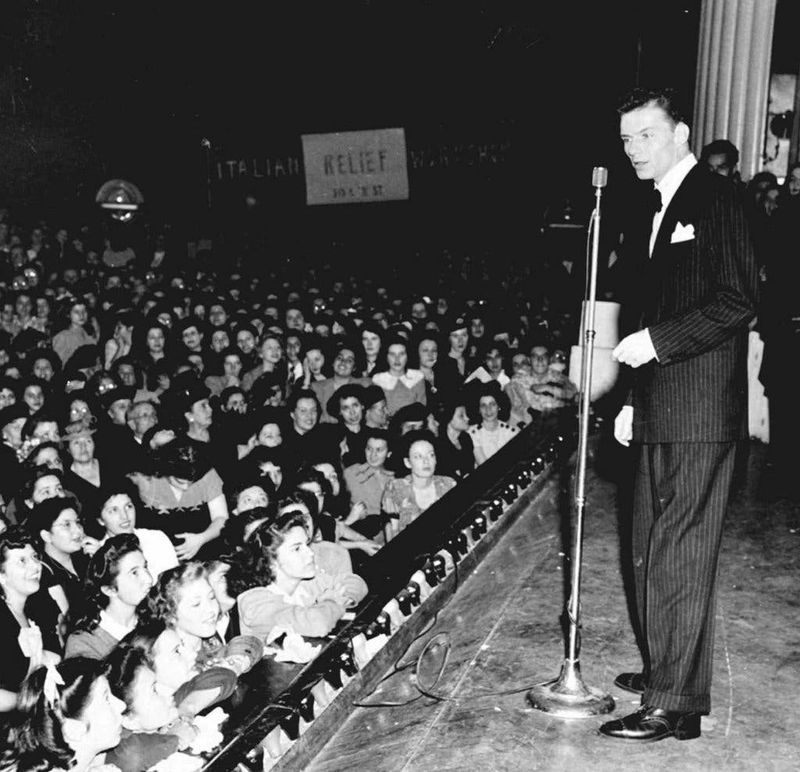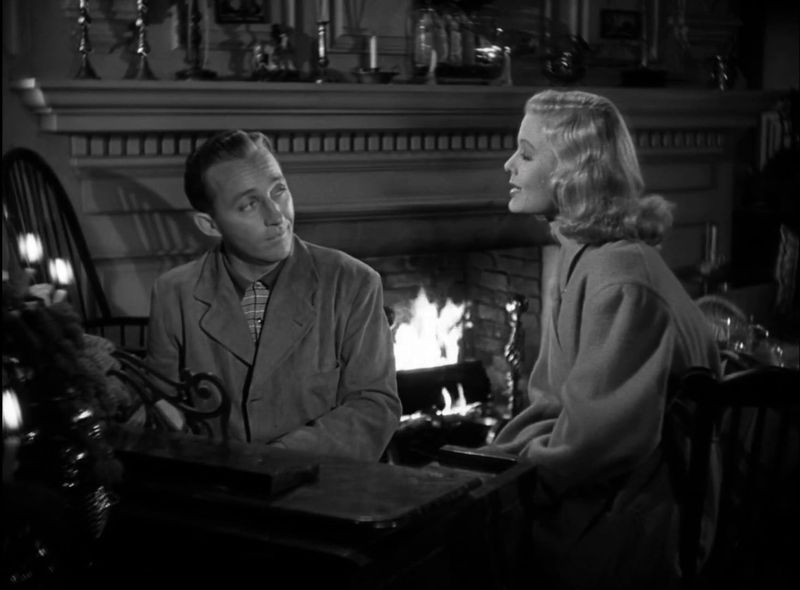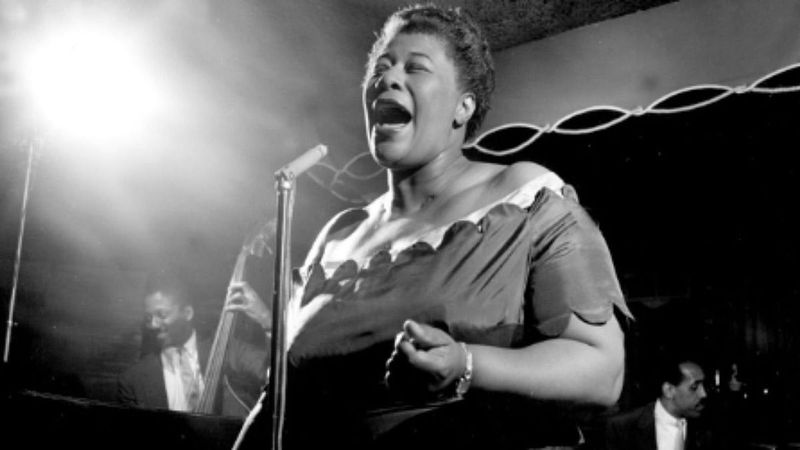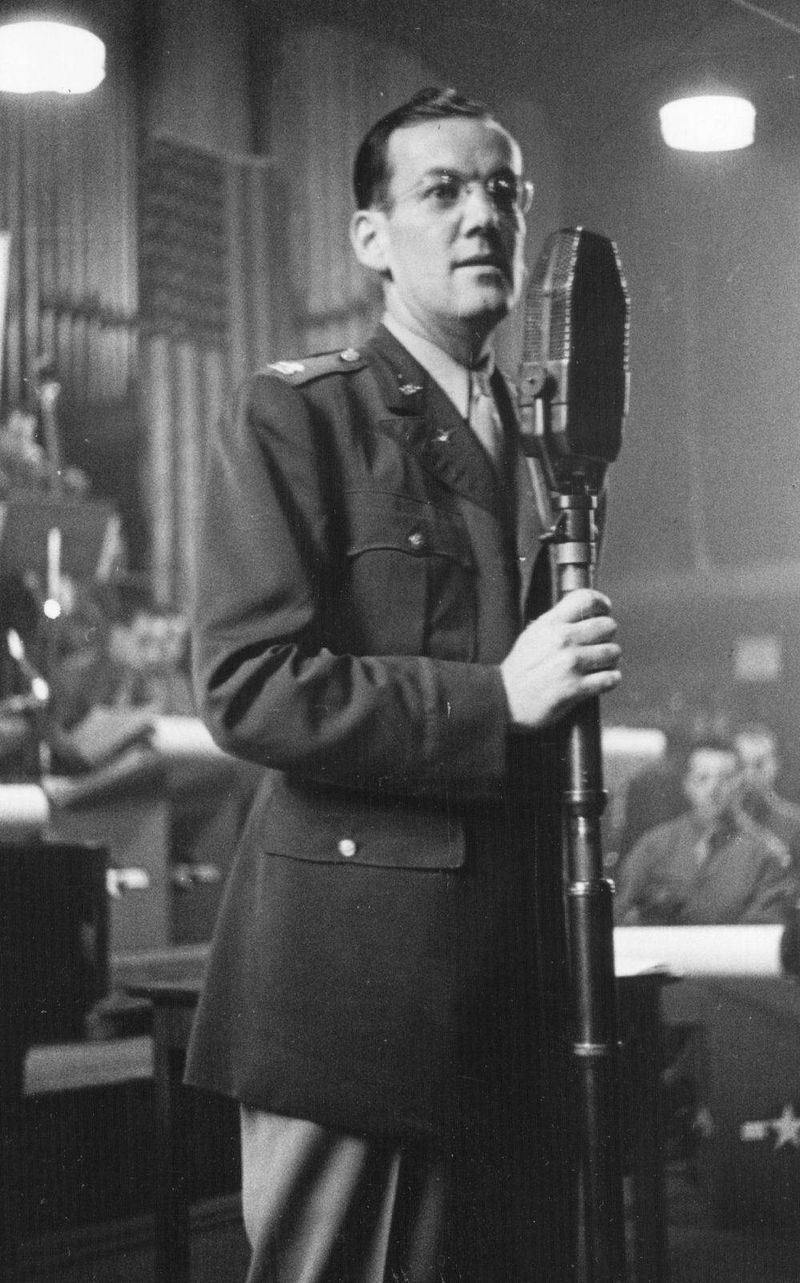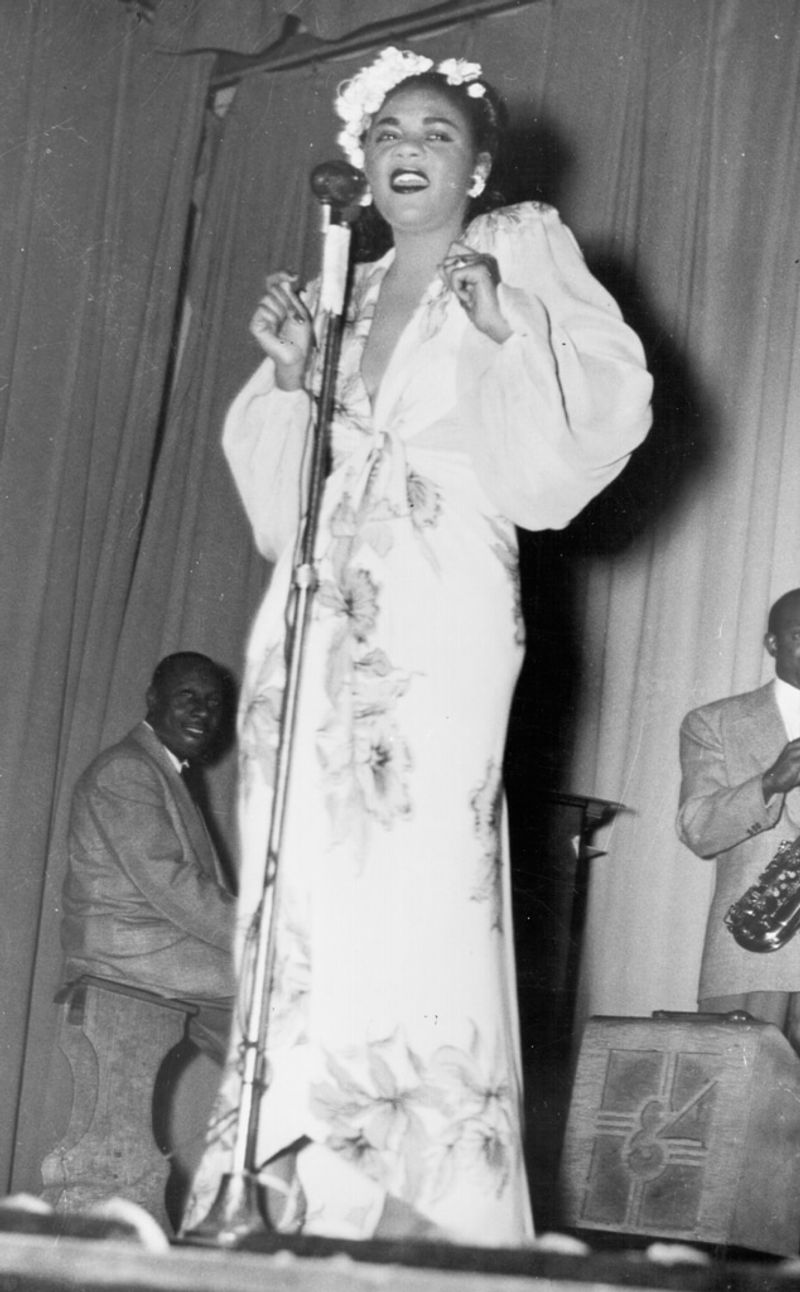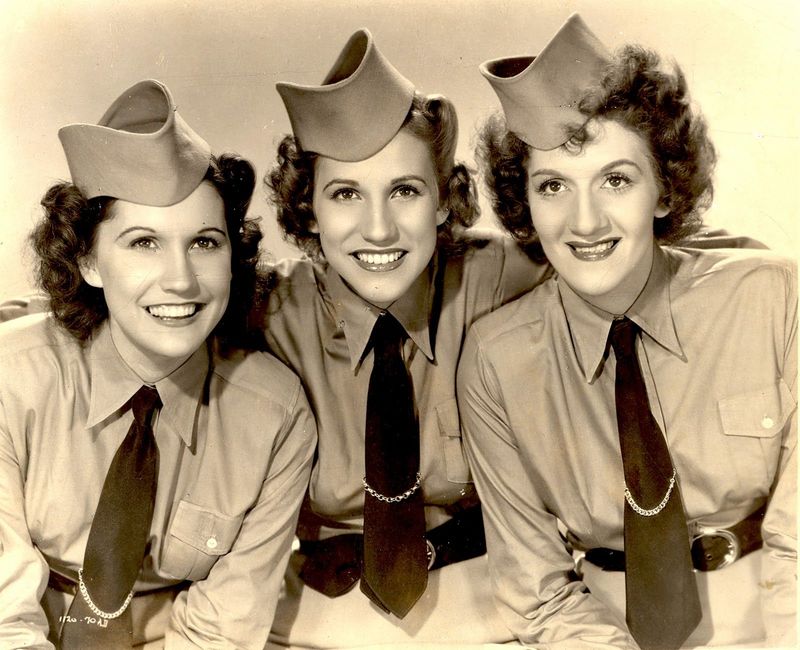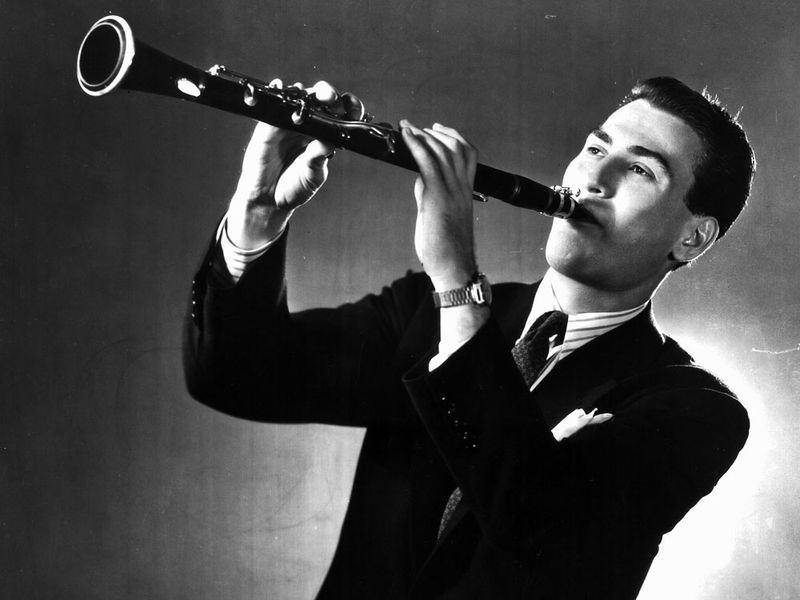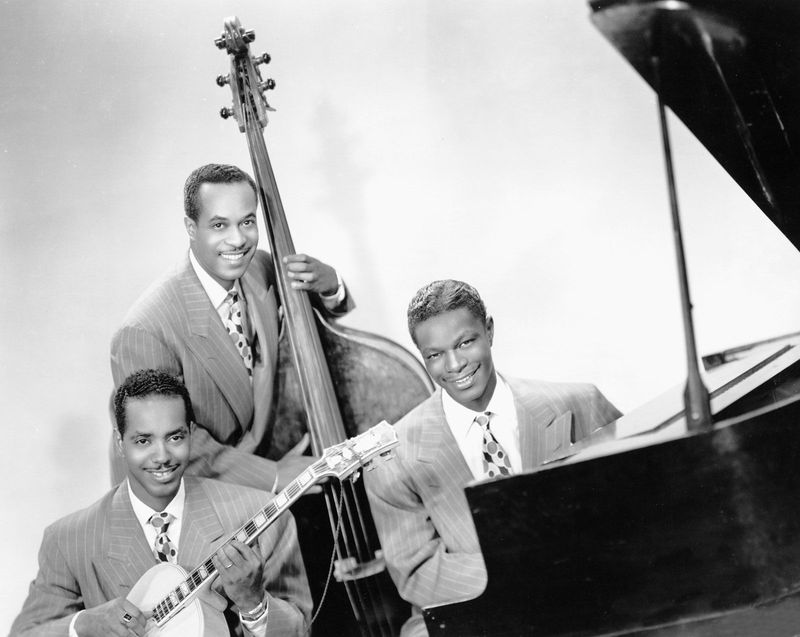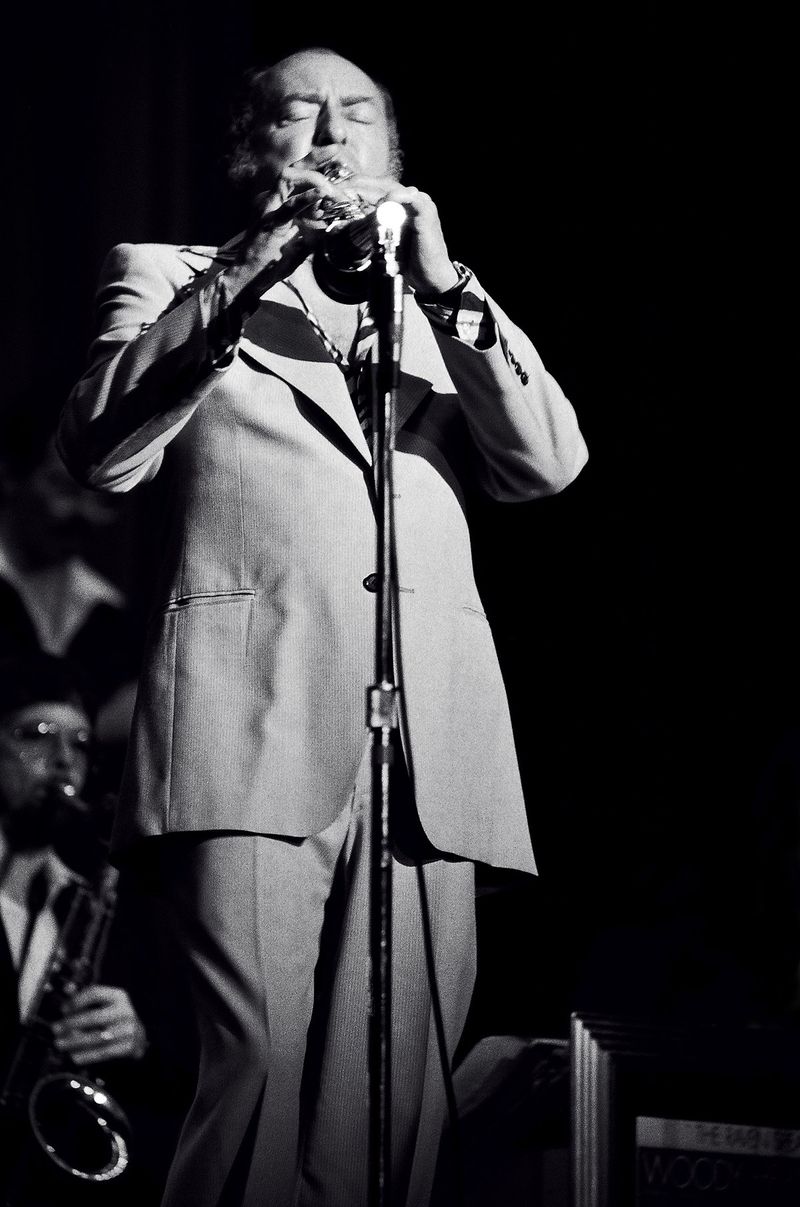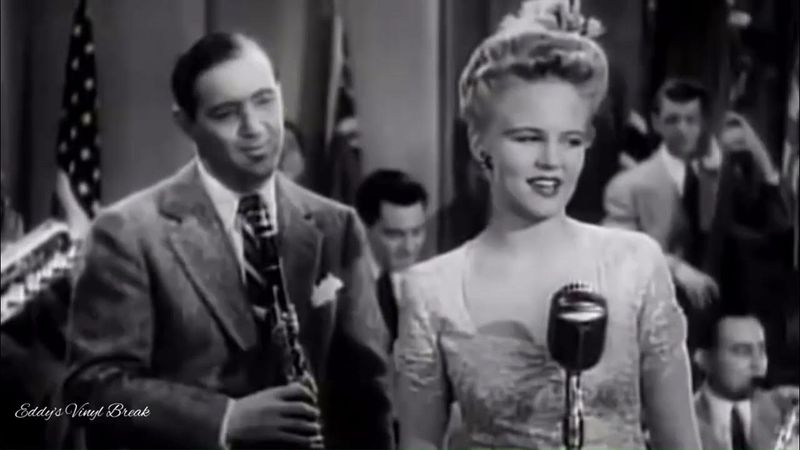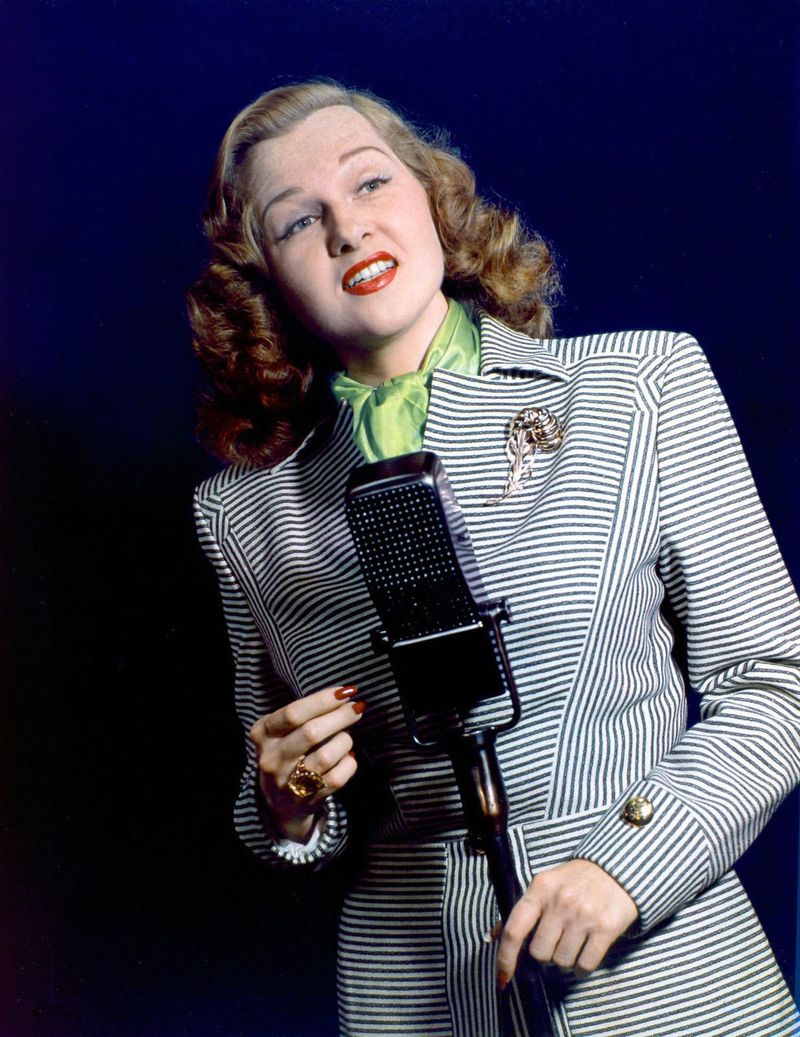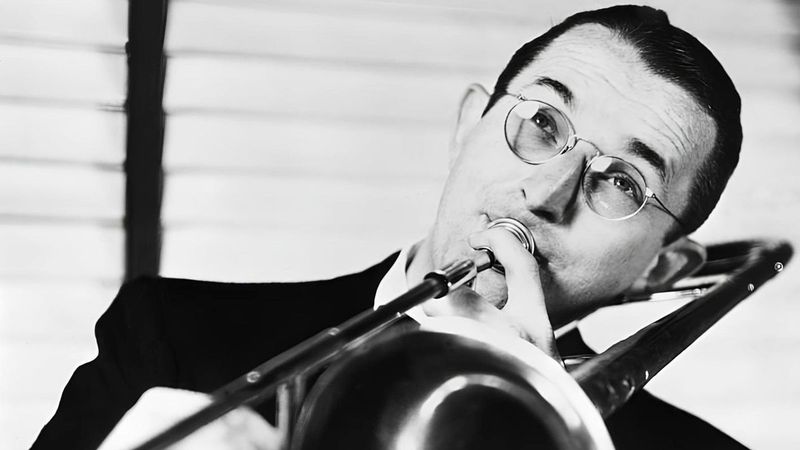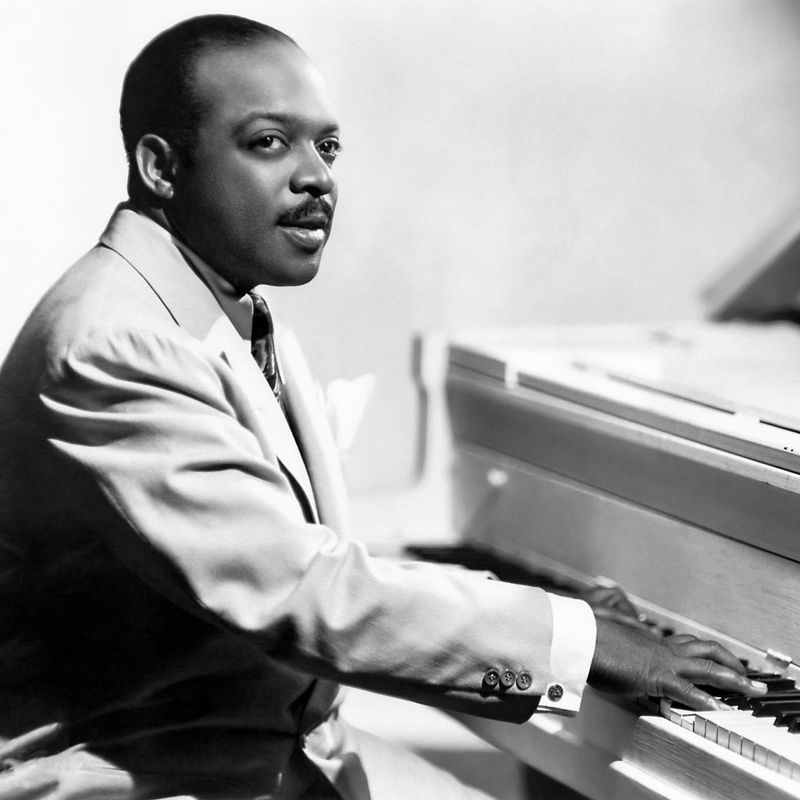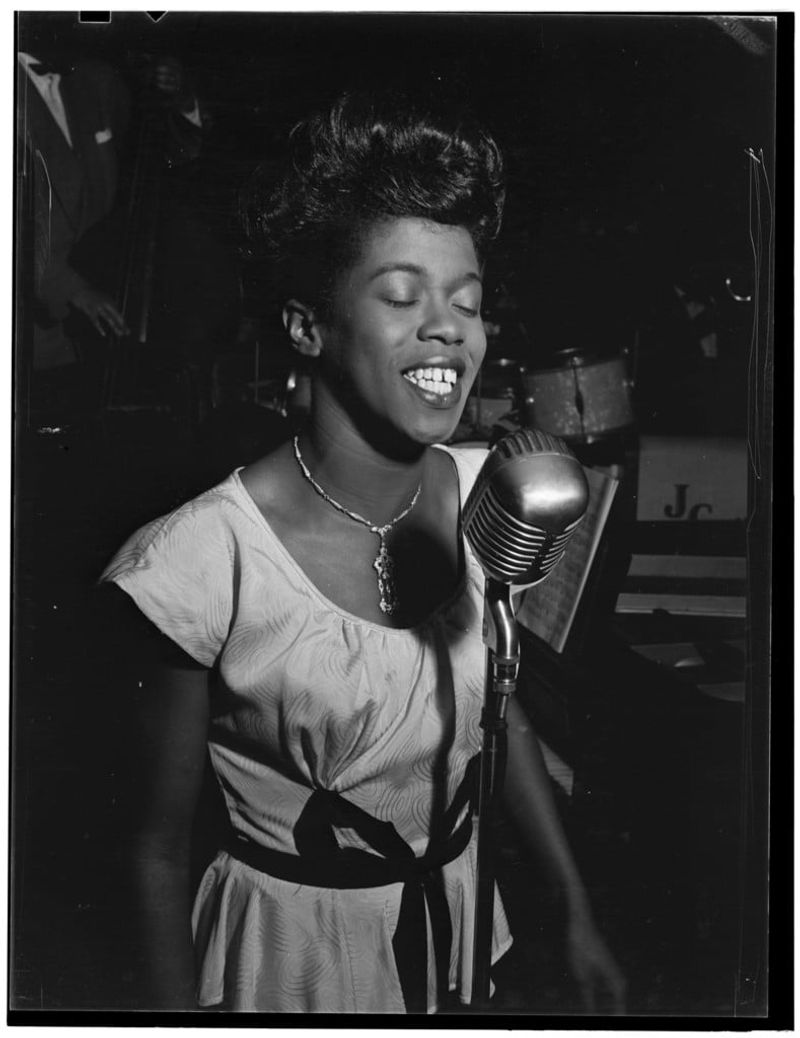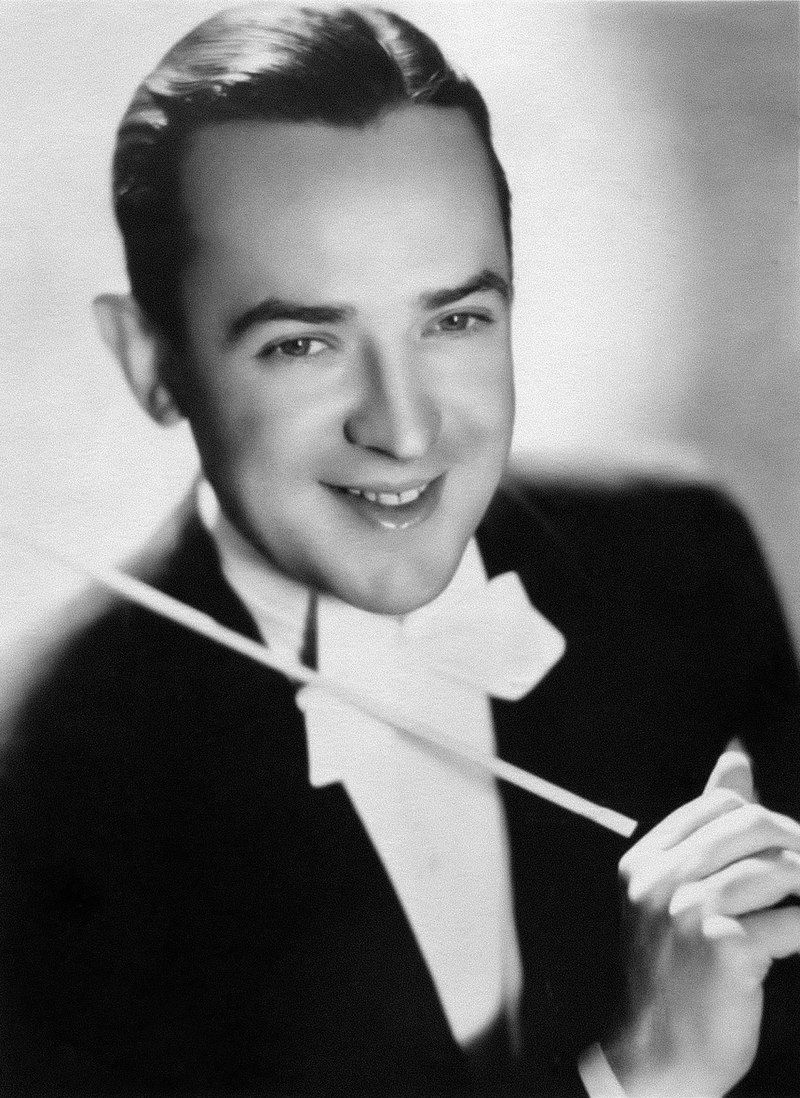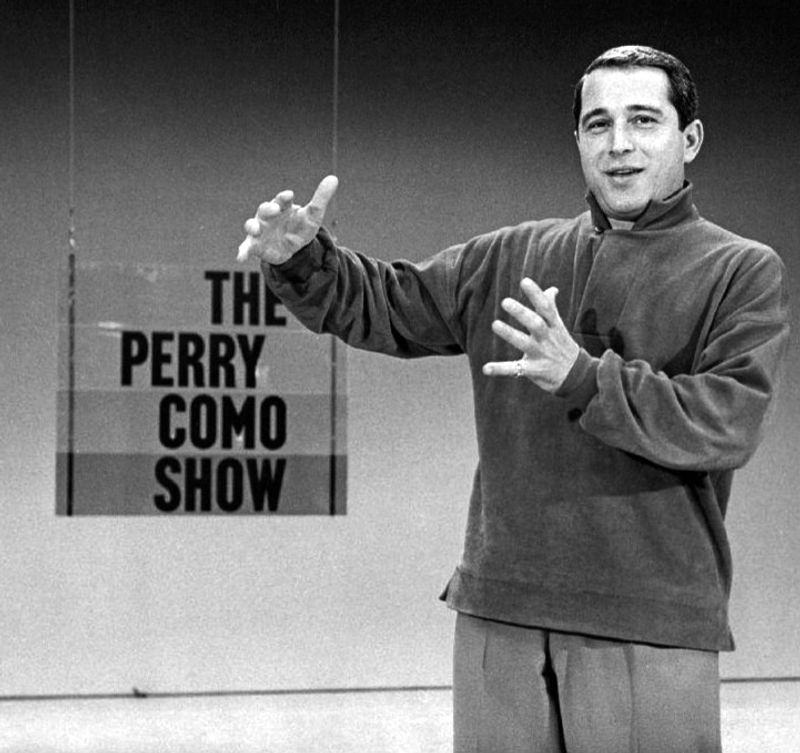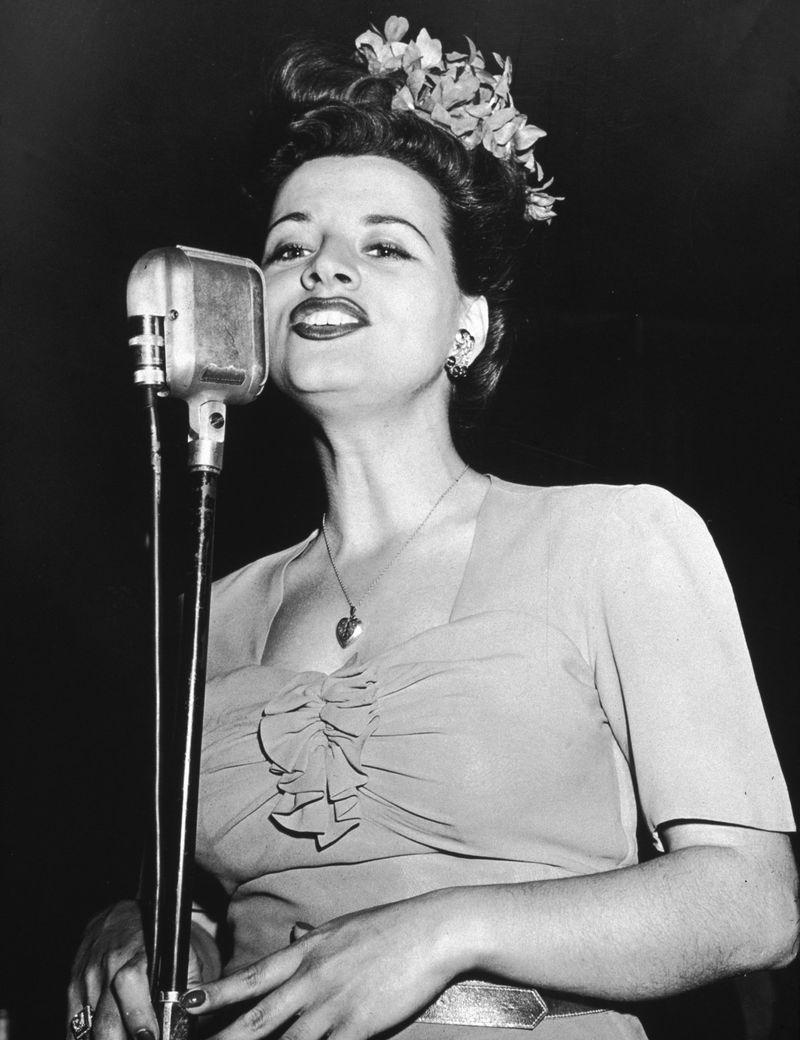The 1940s transformed American music forever. As World War II raged and later ended, music became both comfort and celebration for millions. Radio broadcasts filled homes with swing bands, crooners, and jazz pioneers who defined the decade’s soundtrack. These 20 legendary artists didn’t just entertain—they revolutionized music during one of history’s most challenging periods, creating sounds that still influence musicians today.
1. Frank Sinatra: The Voice That Made Hearts Swoon
Before he became the legendary Chairman of the Board, young Sinatra sparked unprecedented teen hysteria in the early 1940s. His silky baritone and emotional delivery on hits like “I’ll Never Smile Again” turned bobby-soxers into screaming fans who fainted at his performances. Sinatra’s 1942 departure from Tommy Dorsey’s orchestra launched his meteoric solo rise. His Columbia Records contract and performances at New York’s Paramount Theater cemented his status as America’s premier male vocalist. Beyond the swoon-worthy ballads, Sinatra’s innovative phrasing forever changed vocal performance, treating lyrics like a jazz instrumentalist might approach a solo.
2. Bing Crosby: America’s Comforting Voice During Wartime
The mellow-voiced Crosby became America’s audio security blanket during the tumultuous war years. His laid-back delivery and conversational singing style made listeners feel he was performing just for them in their living rooms. Recording “White Christmas” in 1942, Crosby created the best-selling single of all time for decades. The nostalgic holiday classic resonated deeply with homesick soldiers stationed overseas and anxious families back home. Beyond music, Crosby pioneered audio recording technology, investing in companies that developed tape recording methods still influential today. His weekly radio program consistently topped ratings charts throughout the decade.
3. Ella Fitzgerald: The Voice That Defied Musical Boundaries
Nicknamed “The First Lady of Song,” Fitzgerald’s improvisational genius transformed the jazz landscape. Her 1945 scat performance of “Flying Home” remains a masterclass in vocal jazz improvisation, demonstrating her ability to use her voice like a horn player. After winning an amateur night at Harlem’s Apollo Theater as a teenager, Fitzgerald rose through the ranks of Chick Webb’s orchestra. When Webb died in 1939, she remarkably took over leadership of the band at just 22 years old. During the 1940s, Fitzgerald began her collaboration with Norman Granz’s Jazz at the Philharmonic concerts, which would eventually lead to her landmark songbook recordings that redefined American popular music.
4. Glenn Miller: The Bandleader Who Soundtracked Victory
Miller’s distinctive string-heavy orchestration created the unmistakable sound that defined the early 1940s. His arrangement technique of having the clarinet play the melody an octave above the saxophone section produced the signature “Miller sound” that dominated airwaves. At the height of his commercial success, Miller disbanded his civilian orchestra to form the Glenn Miller Army Air Force Band in 1942. He performed over 800 shows for allied troops, boosting morale while risking his own safety. Miller’s mysterious disappearance in December 1944, when his plane vanished over the English Channel en route to entertain troops in France, turned him into a wartime legend whose music became forever linked with the Allied victory.
5. Billie Holiday: The Raw Emotional Power of Lady Day
Holiday’s uniquely haunting voice told stories of heartbreak and injustice with unmatched emotional honesty. Her 1944 recording of “Lover Man” captured the longing and vulnerability that made her performances so compelling even as her personal struggles intensified. Despite facing relentless racism and legal troubles, Holiday continued performing at New York’s Café Society, one of the first integrated nightclubs in America. Her courage in performing the anti-lynching protest song “Strange Fruit” risked her career but cemented her legacy as an artist of profound conviction. Holiday’s distinctive vocal technique—manipulating tempo and phrasing while bending notes with jazz-like improvisation—influenced virtually every female vocalist who followed her.
6. The Andrews Sisters: Harmony That Boosted America’s Morale
These three Minnesota-born siblings—Patty, Maxene, and LaVerne—created tight, swinging harmonies that became the soundtrack to America’s war effort. Their energetic, perfectly synchronized performances of “Boogie Woogie Bugle Boy” and “Don’t Sit Under the Apple Tree” lifted spirits on the home front and battlefields alike. Remarkably versatile, the Andrews Sisters recorded with everyone from Bing Crosby to Burl Ives, spanning genres from boogie-woogie to calypso. They sold over 75 million records and performed extensively for troops through USO tours, sometimes giving six shows daily in combat zones. The sisters’ influence extended beyond music—they appeared in 17 Hollywood films during the 1940s, becoming multimedia stars when that concept barely existed.
7. Artie Shaw: The Reluctant King of the Clarinet
Shaw’s virtuosic clarinet playing took swing music to unprecedented technical heights. While other bandleaders courted popularity, Shaw constantly pushed musical boundaries, incorporating strings, harpsichord, and complex arrangements that challenged dancers and listeners alike. A restless innovator, Shaw disbanded successful orchestras multiple times during the 1940s at the peak of their popularity. His Gramercy Five chamber jazz group, featuring harpsichord instead of piano, created some of the decade’s most sophisticated small-group recordings. Shaw’s personal life generated almost as much attention as his music—he married eight times, including to Hollywood stars Lana Turner and Ava Gardner. Despite his commercial success, Shaw remained ambivalent about fame, eventually abandoning music entirely in 1954.
8. Nat King Cole: The Velvet Voice Behind the Piano
Before becoming known primarily as a vocalist, Cole led one of the most influential small jazz groups of the early 1940s. The King Cole Trio’s piano-guitar-bass format created an intimate, sophisticated sound that contrasted with the dominant big bands of the era. Cole’s warm baritone voice first emerged as a commercial force with 1943’s “Straighten Up and Fly Right,” based on his father’s sermon. The song’s success hinted at his future transition from jazz pianist to pop vocal superstar. As one of the first African American musicians to host a national radio program, Cole broke barriers despite facing constant racism. His musical versatility allowed him to appeal to both jazz aficionados and mainstream audiences simultaneously.
9. Dinah Shore: The Southern Songbird Who Captivated America
Tennessee-born Shore’s warm, inviting voice and genuine personality made her America’s musical sweetheart during the war years. Her 1944 recording of “I’ll Walk Alone” became an anthem for women with loved ones overseas, perfectly capturing the era’s mixture of patriotism and personal sacrifice. Shore’s musical versatility allowed her to shift effortlessly between tender ballads and upbeat novelty songs. She performed constantly for troops both overseas and at home, earning the admiration of military and civilian audiences alike. Unlike many vocalists who remained strictly in the music world, Shore pioneered multimedia stardom. Her regular radio program and appearances in Technicolor musicals established her as an entertainment force who would later conquer television in the 1950s.
10. Woody Herman: The Bandleader Who Bridged Swing and Bebop
Herman’s innovative “First Herd” orchestra of the mid-1940s revolutionized big band music by incorporating elements of emerging bebop. Unlike bandleaders who resisted musical evolution, Herman embraced modern jazz harmonies and hired forward-thinking young musicians like trumpeter Sonny Berman and saxophonist Flip Phillips. The band’s 1945 recording of “Caldonia” with its shouted “What makes your big head so hard?” refrain became a massive crossover hit. Herman’s willingness to feature extended instrumental solos and complex arrangements attracted serious jazz listeners while still appealing to dancers. A skilled clarinetist and alto saxophonist himself, Herman’s greatest talent was recognizing and nurturing musical innovation. His bands became important training grounds for musicians who would later become jazz luminaries in their own right.
11. Peggy Lee: The Sultry Voice of Restrained Emotion
Lee’s 1942 recording of “Why Don’t You Do Right?” with Benny Goodman’s orchestra introduced the world to her distinctively understated vocal style. Unlike many female singers of the era who projected dramatically, Lee discovered that singing softly could command even more attention. After leaving Goodman’s band to pursue a solo career in 1943, Lee pioneered a cool, jazz-influenced pop sound. Her minimalist approach created tension and intimacy, drawing listeners into her musical world rather than overwhelming them with vocal power. Beyond singing, Lee emerged as a formidable songwriter, penning hits like “It’s a Good Day” and “Mañana.” Her artistic control over her material was unusual for female performers of the 1940s, setting a precedent for future generations of women in music.
12. Jo Stafford: The Perfect Voice That Comforted a Nation
Stafford’s flawless pitch and warm, pure tone earned her the nickname “G.I. Jo” for her popularity with servicemen. Her 1944 recording of “Long Ago and Far Away” exemplified her ability to convey emotional depth without vocal gymnastics or artifice. Beginning the decade as a member of the Pied Pipers vocal group with Tommy Dorsey’s orchestra, Stafford launched her solo career in 1944. Her unpretentious style and perfect diction made her especially beloved for sentimental ballads that resonated with wartime emotions. Beyond her commercial recordings, Stafford dedicated countless hours to Armed Forces Radio Service performances. She regularly appeared on the “G.I. Journal” program and participated in V-Discs, special recordings distributed exclusively to military personnel overseas.
13. Tommy Dorsey: The Sentimental Gentleman of Swing
Dorsey’s trombone playing set the standard for technical brilliance and emotional expression in the 1940s. His seemingly impossible ability to play long phrases without breathing (using circular breathing techniques) earned him the nickname “the Sentimental Gentleman of Swing.” While many bandleaders struggled during the recording ban of 1942-1944, Dorsey’s orchestra remained commercially viable through constant touring and radio appearances. His band served as an incubator for talent, most notably launching Frank Sinatra’s career before the singer’s 1942 departure. Dorsey’s perfectionism and demanding leadership style were legendary. Musicians feared his temper but respected his musical standards, which produced one of the most polished and professional bands of the swing era.
14. Vera Lynn: The Voice That Promised Better Days Ahead
Though British, Lynn’s impact extended across all Allied nations during the darkest days of World War II. Her signature song “We’ll Meet Again” offered a simple yet profound promise to separated loved ones that resonated universally during wartime uncertainty. Lynn’s 1942 recording of “The White Cliffs of Dover” became an anthem of hope for a peaceful future. Her sincere delivery and avoidance of sentimentality gave her patriotic songs genuine emotional power rather than merely propagandistic appeal. Unlike many entertainers who performed for troops in relatively safe areas, Lynn frequently visited dangerous front-line locations in Burma and elsewhere. Her 1944 hit “(There’ll Be Bluebirds Over) The White Cliffs of Dover” symbolized the yearning for peace that defined the war’s final years.
15. Count Basie: The Master of Swinging Simplicity
Basie’s economical piano style—playing sparse, perfectly timed notes rather than flashy runs—embodied his entire musical philosophy. His Kansas City-influenced orchestra emphasized rhythm and riff-based arrangements that made them the ultimate dance band of the 1940s. Despite personnel changes during the war years, Basie maintained his distinctive sound built around his “All-American Rhythm Section.” The addition of vocalist Jimmy Rushing, whose shouted blues contrasted with the crooning style popular at the time, gave the band additional dimension. Basie’s 1943 recording of “One O’Clock Jump” demonstrated his genius for building tension through repetition and gradual intensification. His emphasis on the ensemble over individual soloists created a unified sound that influenced generations of jazz and R&B arrangers.
16. Sarah Vaughan: The Divine Voice That Redefined Vocal Jazz
Vaughan’s 1944 recording of “It’s Magic” announced the arrival of a revolutionary vocal talent. Her incredible range, from contralto depths to soprano heights, combined with her harmonic sophistication forever changed jazz singing. After winning Amateur Night at Harlem’s Apollo Theater in 1942, Vaughan quickly rose through the ranks of the jazz world. Her stint as singer and second pianist in Earl Hines’ band alongside bebop pioneers Charlie Parker and Dizzy Gillespie exposed her to revolutionary harmonic concepts that she adapted for the human voice. Unlike many vocalists who simply interpreted melodies, Vaughan approached singing like an instrumentalist. Her bold harmonic choices and ability to improvise complex melodic lines earned her the respect of the most advanced jazz musicians of the era.
17. Jimmy Dorsey: The Sweet and Hot Saxophone Master
Often overshadowed by his brother Tommy, Jimmy Dorsey created his own distinctive orchestra sound in the 1940s. His approach featured contrasting “sweet” and “hot” sections within arrangements, showcasing both his lyrical alto saxophone and aggressive clarinet playing. Dorsey’s commercial breakthrough came with his innovative “conversational” duets between vocalists Helen O’Connell and Bob Eberly. Songs like “Green Eyes” (1941) featured Eberly singing romantically in English followed by O’Connell’s upbeat Latin-influenced response—a formula that produced numerous hits. A virtuoso instrumentalist, Dorsey’s saxophone technique influenced countless players. His ability to play seemingly endless phrases through circular breathing and his precise articulation set standards that saxophonists still study today.
18. Perry Como: The Relaxed Baritone Who Made Singing Look Easy
Como’s remarkably relaxed vocal style emerged as the perfect antidote to post-war tension. Beginning his career as a barber in Pennsylvania, Como brought an everyman quality to his performances that connected deeply with middle America. His 1945 recording of “Till the End of Time” (based on Chopin’s “Polonaise”) exemplified his warm, intimate approach. Como never oversold a song, instead allowing the melody and lyrics to shine through his understated delivery. Unlike the intense emotion of Sinatra or the technical perfection of other vocalists, Como’s appeal lay in his apparent effortlessness. His weekly radio program, starting in 1943, brought his soothing voice into millions of homes, establishing a broadcasting career that would later transition seamlessly to television.
19. Kay Starr: The Versatile Voice That Bridged Musical Eras
Oklahoma-born Starr’s powerful voice defied easy categorization, blending elements of pop, jazz, country and blues. Her 1948 recording of “You Were Only Fooling” showcased her emotional range and distinctive vibrato that could convey both vulnerability and strength. Starting as a teenager singing with Joe Venuti’s orchestra, Starr developed remarkable versatility by necessity. When the band played different styles nightly, she adapted her voice to each genre, developing the flexible approach that would become her trademark. Unlike many female vocalists of the era who projected a refined image, Starr brought an earthy, authentic quality to her performances. This rootsy approach would later position her perfectly for the rockabilly era, allowing her career to flourish well beyond the 1940s.
